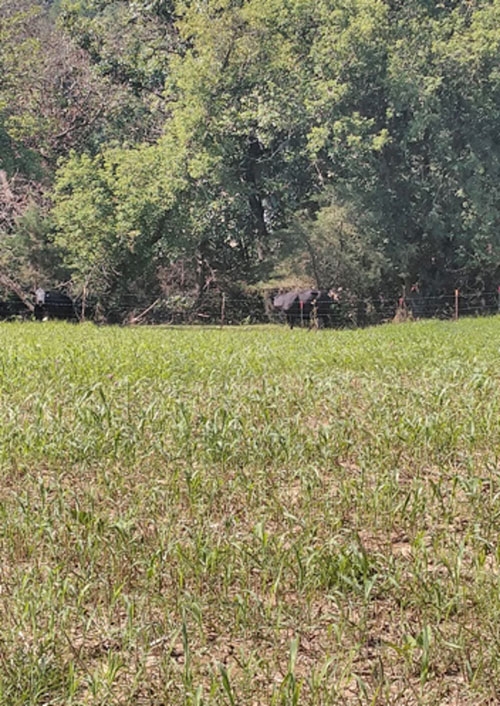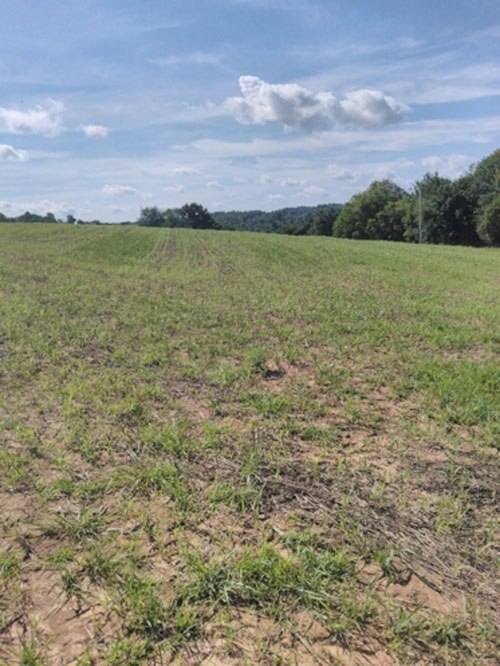You are here
Home ›Local farmer utilizes cover crops to prevent soil erosion and for additional forage benefits

Submitted photos.

Submitted by Eric Novey, Project Coordinator, Allamakee SWCD
A local farmer is breaking up his rotation, reducing erosion, and providing additional forage benefits for his cattle by planting cover crops.
Erik Helgerson, who farms near Lansing, tried a unique sequence of cover crops this year on 11 acres near his home. Helgerson has been no tilling for 8 years now. Last year he started to experiment with different cover crop species such as Japanese millet and turnips. He had experienced positive results so this year he decided to take it a step further.
First, Helgerson seeded a mix of triticale and peas into corn stubble with his 10-foot hay buster no till drill. The mix contained 60% triticale and 40% peas, planted at a rate of 2.5-3 bushels per acre. Prior to seeding he applied 30 units of nitrogen. That crop was harvested July 3 and yielded 3.5 tons an acre of forage. Next, on the same acres he drilled a mix of sorghum sudangrass and piper sudangrass July 5.
Helgerson plans to harvest this crop late September. Finally, he is considering seeding a rye and hairy vetch mix this fall depending on how much cover is remaining after harvest of the sorghum sudangrass and piper sudangrass.
Helgerson has been battling to produce enough forage for his cattle due to excessive deer browse in his area. He says, “the more forage I can get out of my acreage the better. One thing I would do differently next year is not remove the corn stalks to leave more ground cover. My goal is to keep this steep ground covered as much as possible.”
The five principals of soil health are:
1. Armor the soil.
2. Minimize disturbance.
3. Increase plant diversity.
4. Keep living roots in the soil.
5. Integrate livestock - if you don’t put livestock on the field, utilizing manure as a nutrient source can have some of the same benefits.

